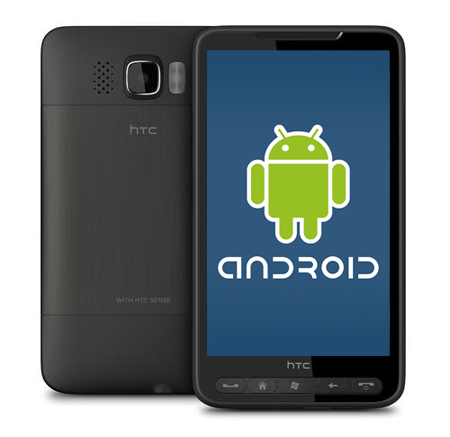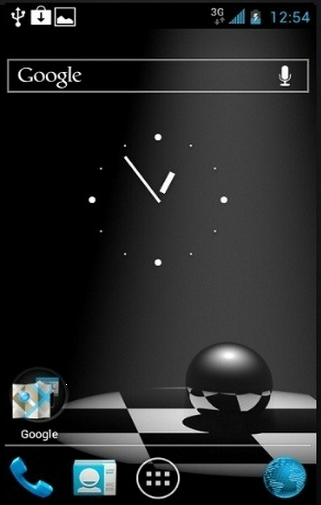
If you’ve been following recent development news on the HTC HD2, then you probably know by now that the HD2, codename Leo, is on the verge of a breakthrough that will transform this device forever.
The HD2, which was released by T-Mobile US in late March, is a beautiful piece of hardware. It’s equipped with Qualcomm’s speedy 1 Ghz Snapdragon processor,  576MB RAM, 16GB of SD card space and a stunning 4.3 inch screen surrounded by a thin, black bezel. Despite its stunning hardware, the HD2 lacks a good OS. Its Microsoft’s Windows Mobile 6.5 barely does justice to the device. OS aside, this device competes along ranks of its Android counterparts such as the Nexus One, the EVO 4G, the Samsung Vibrant, myTouch 3G Slide just to name a few. Almost everything about the HD2 makes it a sought after device. I got a chance to meet this device and quickly fell in love with it.
Earlier this year, much to the Android community’s amazement, the XDA-Developers community brought life to Leo when Android was successfully ported to it using the Handheld Reverse Engineering Tool (HaRet). This approach, which allows the device to boot a Linux kernel from its Windows Mobile environment via the storage card, has paved the way for many Android ports that we now enjoy as everyday functional ROMs.
Drawbacks to porting Android via the HaRet approach include the need for the Android OS to boot from the WinMo environment using the HaRet executable file and the need to run it from the HD2’s SD card instead of its internal memory. What is left to be achieved on this device is actual replacement of the Windows Mobile OS for good! Yes, getting rid of Wm6.5 from this device and transforming it into an Android phone. Good thing is, it’s been done.
Getting Android to run directly from the moment it is powered up is the latest major undertaking for the HD2 right now. This feat has been made possible using NAND, which Russian developer Cotulla and his team, the Dark Forces Team (DFT) are currently working on. The much anticipated transformation is soon to go public any moment now. Cotulla’s recent updates show that the DFT is expected to release the first NAND based Android ROM for the LEO shortly. If this happens then I am certain that this will make the HTC HD2 King!

HD2 running Android
This may seem like a far fetched claim, but NAND on this device is certainly going to transform the capabilities of this phone to another level. So what is NAND all about and how will it move the HD2 from the “yet to be extinct devices” category? NAND development focuses on the nitty gritty development via the internal memory of the phone that enables Android OS to be placed directly onto the memory of the phone rather than the SD card. This gives the same functionality that the HaRet approach provides when ported from the memory card. As many will agree, flashing Android ports via NAND provides a more stable and convenient solution for all ROM enthusiasts.
There are several good reasons for flashing NAND ports versus directly running the ports via the memory card. Some benefits include:
- Faster boot speed
- Improved battery life due to lower power consumption.
- Consistent and reliable I/O performance compared to slower speeds on SD cards.
- Consistent driver performance.
- Access to SD cards as actual removable devices again.
- Functional PC to SD card connection (A functionality known to disabled by HD2 devs because it corrupts the whole build when used.)
Of course, power management is one of the concerns that daunts us when it comes to Android ports. There may be a small increase in battery life and small increase in speed when flashed to NAND. We have yet to see how well that works compared to the current HaRet approach.
How soon until we see a NAND release for LEO? Just like Cyanogen and other hardworking developers will attest to, Cotulla does not want us to ask for ETAs.  With that said, no announcement has been officially made about the public release of NAND for the Leo. The status of this development release by the team shows that there is still a significant amount of testing being conducted on various hardware components such as wifi, bluetooth, camera and the GPS.
Some things we know about Cotulla’s NAND work include:
- Working on fixing bad audio quality.
- Heavy battery drainage seems to be fixed.
- Fixing some minor bugs.
- WLAN is working now.
- USB Mass Storage is working in the MAGLDR – This means users can access SD card without OS boot!
From what I understand, users will first need to flash MAGLDR as an .NBH file unto the LEO and then use the DFTAndroidInstaller. The MAGLDR is a bootloader which was developed byDFT team to allow direct OS booting from NAND on the HTC Leo / HD2. Though not yet publicly available, the MAGLDR is intended to accomplish boot a linux kernel from NAND. MAGLDR will also allow users to choose between WM 6.5 / Linux-based OS as well as select different kernels to run. It will also support flashing YAFFS2 partitions via USB or SD card.
Technically speaking, the MAGLDR replaces our SPL while DFTAndroidInstaller acts like the Windows Rom Update Utility (RUU) to flash Android ROMs via yaffs2 file system which is supported on the HD2. From my limited understanding, yaffs2, which literally stands for “yet another flash file system,” is an alternate file system that interacts with the hardware and NAND easily. This process will make it easier to revert back to WM65 by flashing the official ROM.

DFTInstaller
Enough with the technical stuff. I am just itching to get a NAND port onto the HD2 and am sure a lot of other people are too! I think we all agree that having a stable ROM with most hardware working is what matters. Cotulla is doing a significant amount of testing prior to public release. The longer it takes, the more stable the solution. We certainly don’t want a bunch of bricked HD2s units upon release. So let’s not rush it people! You can follow @CotullaCode for updates on the status of this development. Speaking of patience, his last update was on Oct 12th.
DFT deserves much more recognition than this post can do justice, too. We are patiently waiting the for the release.
Video of NAND on HD2
There is certainly a lot to love about the HD2. Contrary to the belief that Microsoft Windows 6.5 users won’t be able to upgrade their devices to Windows Phone 7, it appears that Cotulla has also successfully ported Windows Phone 7 OS on the device as well. I am not a fan of this OS but of course it’s always a plus to have the best of both worlds on a device. After all, the specs of the HD2’s successor, the HD7, isn’t much different either.
If I can we can have HTC HD2 run both the latest Android build and Windows Phone 7, then isn’t this enough to declare the HD2 King? If not, then at least it’s a jack of all trades! Nothing beats the added benefit of porting various ROMS from multiple platforms. A rare feature very few devices can boast of. I am so ready to declare the HD2 as my device of choice.
Video of Windows Phone 7 on the HD2









